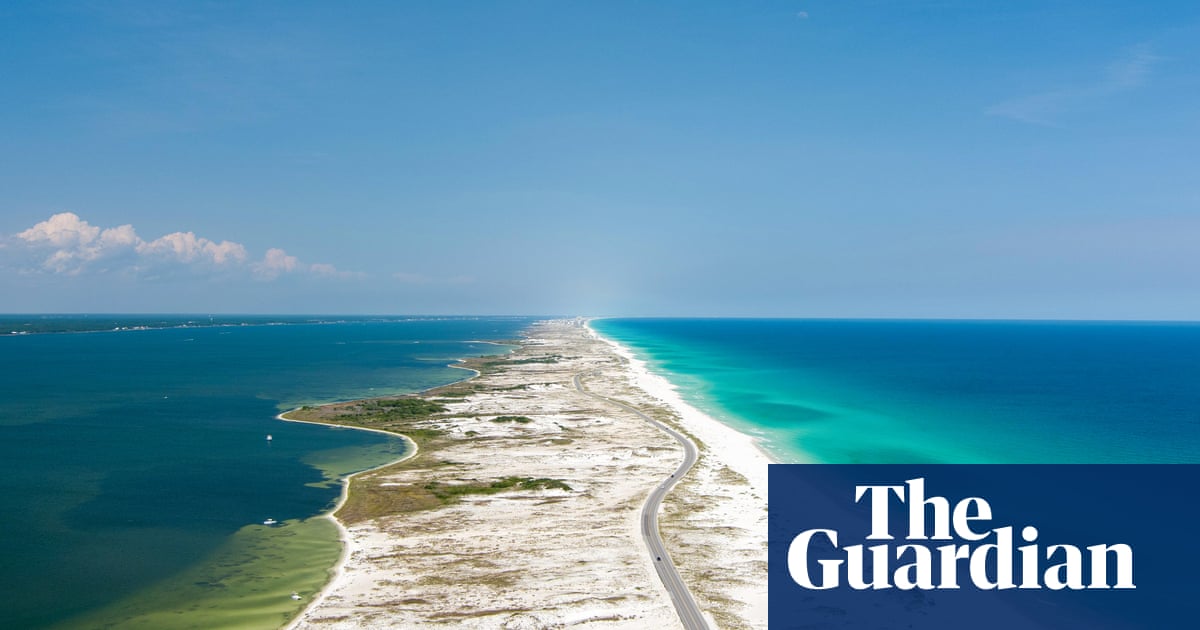AFloridaman who fishes sharks has been called a “true hero” after saving a teenage girl from drowning in a rip current by using a drone to deliver a flotation device to her.
Andrew Smith’s heroics – which have gone viral in corners of the internet dedicated to uplifting news stories – unfolded after he left work on 15 May and made the last-minute decision to go to Pensacola Beach to try fishing in the waters there, according to the Florida stationCBS 12.
He had only beenthere10 minutes when a girl ran up to him and his friend while asking if anybody could swim – which, due to seizure disorder, Smith could not. The girl’s friend, meanwhile, was being sucked farther and farther away from the shore and into the water by a rip current that had ensnared her.
“She was running and screaming, and nobody [else out there] could swim” either, Smith said of the girl seeking help, as CBS 12 put it.
Smith said he looked down at a drone he had and got an idea. He could have the drone fly a flotation device out to the girl in distress, who had been battling the rip current for about five minutes and realistically could not keep it up much longer.
“The drone can swim [even if] I can’t,” he said he thought to himself.
Smith’s first rescue attempt did not go well. Fazed by strong winds at the beach that day, he released the flotation device too early – a potentially costly mistake that nearly overwhelmed Smith.
“I was shaking pretty badly,” Smith said to CBS 12. “It was nerve wracking – I almost cried.”
But Smith composed himself, got another flotation device from a bystander and loaded it on his drone. Smith said he flew the drone back out and lowered it more slowly than the first time, knowing “that was the last opportunity we were going to have”.
Smith recalled seeing the distressed girl reach up with her hand and almost grab the flotation device. He told CBS 12 that was his cue to lower the drone slightly more and release it.
It worked, Smith recounted. “She climbed on and started floating,” he said.
First responders arrived about five minutes later. Local paramedics, police and lifeguards all said to him that the girl “wouldn’t have made it” if his and his drone’s second flotation device drop attempt failed, according to Smith.
Instead, she managed to get back to the beach and received a clean bill of health after a medical team evaluated her.
CBS 12 reported that a bystander named Robert Nay filmed video of the rescue and remarked that he had “never seen anything like that” in his life. To Nay, it was “apparent the young girl was losing steam very fast”, and he hailed Smith as “a true hero”, the news outlet reported.
Sign up toHeadlines US
Get the most important US headlines and highlights emailed direct to you every morning
after newsletter promotion
Smith explained that the drone he had with him is how he positions bait when he shark fishes. Most shark fishers place their baits by kayak, but that tactic method is unsafe for him because of his seizure disorder, he told CBS 12.
Had the emergency in which he intervened occurred in nearby Fort Pickens, Smith feared he may not have been able to execute the rescue. Fort Pickens is a no-fly zone for drones, he said.
Smith made it a point to use the attention he had earned to remind people to pay attention to the flag system that authorities utilize on beaches to warn the public about dangerous water conditions.
One red flag indicating hazardous conditions because of a high surf and strong current was flying on the day of the rescue that Smith pulled off.
Complicating matters was that lifeguards were scheduled to patrol the beach until after the US celebrates Memorial Day on 26 May.
As Smith recalled, during a five-minute conversation that he shared with him, the father of the girl the shark fisher saved used more glowing terms to describe him than the bystander who filmed the rescue.
“He … called me his guardian angel,” Smith said to CBS 12. “It was pretty crazy.”
